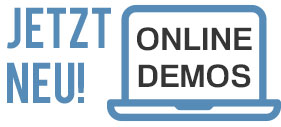Hello!
Has someone gain experiences regarding the auto registries which have been presented by the manufacturer? How many scans are necessary for this purpose? Is there an upper limit? Apart from the application of reference targets or reference spheres, are there other options? What about the natural reference points? Can you also use them? Is it sufficiently accurate?
grafik









Hello grafik,
The auto reference works very well! Since it is a reference of point clouds i a coordinate system, there is no upper limit. However, there is an upper limit for the number of points that can be processed by the evaluation software. In my opinion, reference works even better by means of natural control points. Thus, you can easily put together single scans. To pick off coordinates in point clouds and to allot them to superior coordinates basically works equally regarding natural targets and reference targets. It’s more important that the resolution is adequate to detect the object with sufficient certainty and to determine a centre or a point of targets where the coordinate is actually located. Homogeneous raster of scans, typically generated by systems with two oscillating mirrors, considerably facilitate that step and lead to greater security regarding the calculation of the centre coordinates at targets (particularly regarding auto targets).
Kind regards.
Luchs
Hello Luchs
Thank you for your answer. Regarding natural targets, the selection of targets has to be done manually, or not? I have heard that this is no longer necessary with auto target. Considerinh time, this would favour the use of auto target. But I have heard that objects can be detected incorrectly at automatic detection. Consequently, the single detections in the scans should be controlled. On the whole, the advantage in time would be nullified. Have you gained any experiences?
Grafik
The most time-saving method is to do the alignment by natural control points and georefernecing by (auto) targets. However, the advantage of auto targets is only given for certain measuring arrangements. In my opinion, the functions of auto target by manufacturers have advantages to a limited extent. Therefore, you have to evaluate case-by-case if an acquisition is profitable. In many cases, you achieve a lot by buying the appropriate software.
Regardless of whether the manual selection of natural targets is faster and more precise, there is another difficult issue in my opinion. It's the question how you can guarantee that the same real objects can be seen in several scans at the same time.
In the case of FARO Scene, "too many" detected targets usually do not matter. It's improbable that the same "incorrect" points are mistakenly detected as a target in more than one scan. When a configuration of targets appears in only one scan, an additionally detected target is simply ignored during the registry.
On the contrary:
I'm always enthusiastic how fast and reliable the auto registry is!
By the way, you can always add manually defined natural control points to the automatic detected targets. FARO Scene simply includes those ones in auto registry and allots the names of the targets fully automatically.
At least regarding our solution, you don't have to spend extra money on software or targets. Thus, it's worth a try!
Best regards,
Oliver Bürkler
Senior Technical Product Manager, 3D Laser Scanner
FARO Europe GmbH & Co. KG
Hey Oliver,
Is the application of reference spheres still possible in FARO Scene? I often use reference spheres since they can be best detected spatially. Many clients use printable paper targets because it is very uncomlicated. We have developed some very large targets in our online shop. They are particular suited for outdoor aplications.
http://shop.laserscanning-europe.com/Laser-Scanner-Target-Plates-Large-Set
On the conference of the Association of German Transport Undertakings (VDV) in Bielefeld, among others, a study concerning the precise detection of auto targets by the company Zoller & Fröhlich in practice was presented by the surveyor’s office Dr. Hesse & Partner. Regarding regional schemes, this method supplies similar exact results as an additional survey by use of total station.
The current development in registry by the manufacturers is a great relief as well as an economy of time. We are very interested in the further development.
Eric Bergholz
Of course, you can use spheres any longer!
Also with checkerboard targets mixed in the same scan.
The "former" orbital targets still work. But there is no automatic detection for them. Thus, the user has to mark them by means of the object marker.
The automatic assignment of names works with each FARO Scene object.
Furthermore, the position in the scan is calculated automatically via default after each new, manually generated object. In other words, you immediately get a feedback if the scan is registered correctly (e.g. icons for adjacent scans are displayed at the right place).
Best regards,
Oliver Bürkler